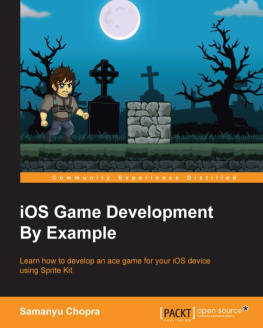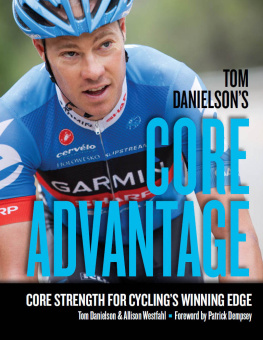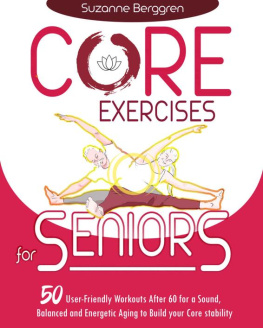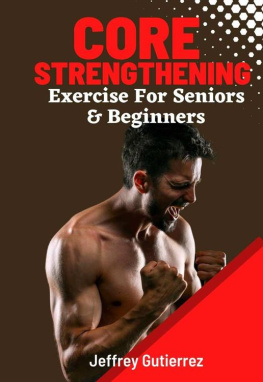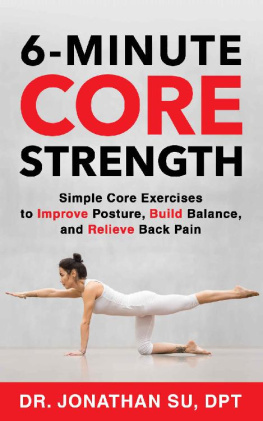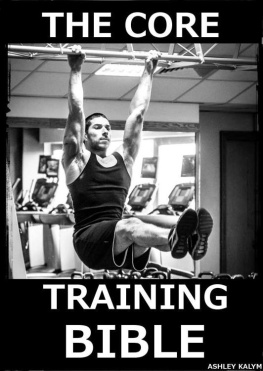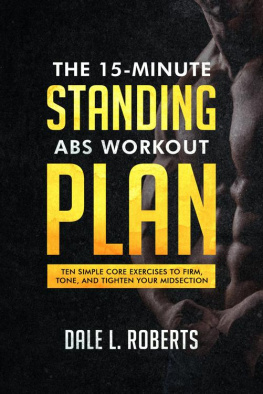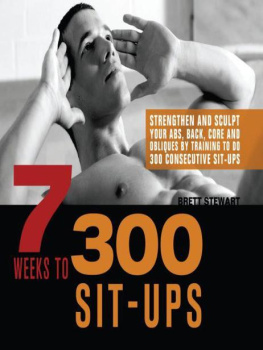Fitness Sutra
EXERCISES WITH CORE SLIDERS
40+ Exercises to Strengthen your Core &
Sculpt your Mid-section using Gliding Discs
Dr. Monika Chopra
www.fitness-sutra.com
Dr. Monika Chopra, 2020
Published by FitSutra Wellness Pvt Ltd, 33, Prachi Residency, Baner Rd., Pune-411045, India
No part of this book may be reproduced, transmitted, or utilized in any form or by any means, electronic or mechanical including photocopying or recording or by any information storage and retrieval system, without written permission from the author.
Although I am a Physiotherapist (PT, for those of you in the USA) and a trained Yoga teacher, my suggestions through this book do not establish a doctor-patient relationship between us. This book is not intended to be a substitute for the medical advice of physicians. You should regularly consult a physician in matters relating to your health particularly with respect to any symptoms that may require diagnosis or medical attention. I advise you to take full responsibility of your safety and be aware of your physical limits. Before practising the exercises described in this book, be sure that your equipment is well maintained. Do not take risks beyond your level of flexibility, aptitude, strength, and comfort level.
This is a work of nonfiction. No names have been changed, no characters invented and no events fabricated. The information provided within this Book is for general informational purposes only. While I have tried to keep the information up-to-date and correct, there are no representations or warranties, expressed or implied, about the completeness, accuracy, reliability, suitability or availability with respect to the information, products, services, or related graphics contained in this book for any purpose. Any use of this information is at the reader's own responsibility. I do not assume and hereby disclaim any liability to any party for any loss, damage, or disruption caused by errors or omissions, whether such errors or omissions result from negligence, accident, or any other cause.
Contents
CHAPTER 1
An Introduction to Core Slider s
What Are Core Sliders?
Core sliders are handy, affordable, light weight, simple to use and easy to transport props, which can be incorporated in your standard weight training, mobility and core strengthening exercises making them more challenging. As the core muscles stay engaged while moving through the movements; exercises with core sliders improve the strength of core. Exercises in motion also help to improve body balance.
Surfaces of Core Sliders
Typically core sliders have two distinct surface finishes. Soft surface on one side (like fabric or foam) and Hard surface on the other (like plastic). The up surface depends upon the flooring that you are going to use your slider on.
The whole purpose of the sliders is to reduce the friction between your body part & the floor. So if you are working out on hard floor (wooden flooring, tiles etc.) then you put the soft side down. However if you are working out on soft surface (carpet, grass etc.) then you should put the hard side down .
Size & Shape of Core Sliders
Most core sliders measure about 7 in diameter, although I find 9 to be better. At 9, your foot can move slightly over the disc but still it would not directly touch the floor and break your rhythm.
The colours & shapes vary by the manufacturer, though neither of these are of any consequence in your exercising experience. The quality of surfaces matter though. I prefer microfiber cloth on the soft side and solid PVC / ABS plastic on the hard side.
In fact you can make your own core sliders. On hard floor, just replace the sliders in all the exercises in this book with a pair of hand towels. Similarly on soft floors, you can use something stiff like plastic plates. In most of the cases, the suggested replacements would do just fine. With just your body and your sliders youre not too far from the gym.
Why Exercise with Core Sliders?
The core slider exercises mostly fall in closed kinetic chain exercise category. Closed chain exercises are those in which your hands or feet are in contact with the surface on which you are exercising. These exercises include movements that are more functional in day to day life, whether its sports or daily life activities. As the load is distributed with nearby muscles these exercises are safer .
Benefits of Workout with Core Sliders
Here are some more benefits of training with core sliders.
- They are most effective in core strengthening exercises.
- They can be used anywhere home, office and outdoors.
- They are portable and storable. They take up little space, especially when compared to gym equipment.
- They are extremely cost effective alternative to purchasing bulky gym equipment or taking expensive gym memberships.
- Core sliders are more versatile as they dont work against force of gravity. They are able to provide freer range of motion.
What to Expect from this Book
In this book, through step by step instructions, I will guide you to the safe and effective methods of using core sliders. Emphasis will be laid on the proper start position and correct movement of the particular body part for the desired results.
I will also guide you to beginners and advanced training regimes which will help you to set desired goals.
CHAPTER 2
Core Slider Basics
Core and Core Engagement
Core is the group of muscles in your abdomen, lower back and pelvic region. Core strength determines how your pelvic region, waist and abdomen functions and looks.
A strong core stabilizes your abdomen, lower back and pelvic region, strongly improving your movement patterns and preventing low back pains.
Core is the most important group of muscles in your body for standing upright, walking, running, maintaining a good posture and generally getting around. Strong core and balance is must for optimal athletic performance, whether it is for competitive, recreational or daily life activity purpose.
Core Engagement
- Pull the tail bone down. Tail bone should be in a slight extension. Low back should be with natural lumbar curve. In the below illustration, only the first one is correct.
In the second illustration, the tail bone is pointing behind with low back in hyper extension. And in the third illustration, the tail bone is pointing forward (over tucking of tail bone) with low back flattened. Both second and third postures are wrong and can lead to severe back problems.
- Pull up top of your head. Stand tall, maintaining the natural curves of your spine.







